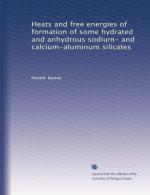|
This section contains 667 words (approx. 3 pages at 300 words per page) |

|
Overview
The term calcium silicate (KAL-see-um SILL-i-kate) applies to a number of related compounds consisting of calcium, silicon, and oxygen, all of which tend to occur in a hydrated form. The most common of these forms is calcium metasilicate, for which data are given above. Calcium silicates with the formulas Ca2SiO4 and Ca3SiO5 are also well known.
Calcium silicate is a component of many minerals, including afwillite, akermanite, andradite, calcite, centrallasite, crestmoreite, diopside, eaklite, grammite, gyrolite, hillebrandite, larnite, and wollastonite. In its pure form, calcium metasilicate is a white to off-white color capable of absorbing up to two and a half times its weight of water. In this form, the hydrated powder retains its ability to flow freely. Addition of a mineral acid, such as hydrochloric acid (HCl) results in the formation of a gel.
Key Facts
Other Names:
Calcium metasilicate
Formula:
CaSiO3
Elements:
|
This section contains 667 words (approx. 3 pages at 300 words per page) |

|


